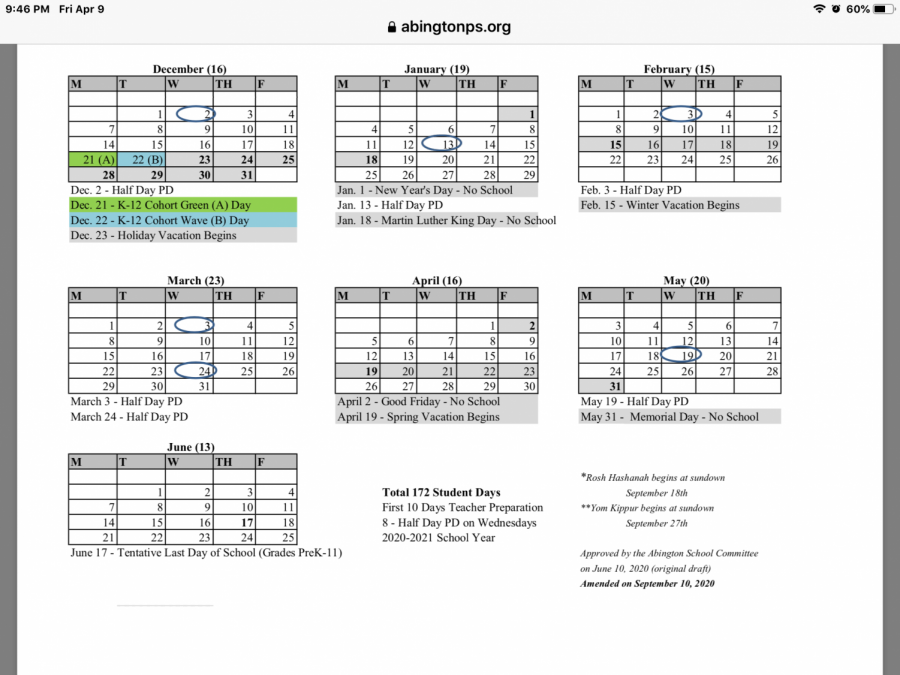Is Remote the Answer?
The last day of school in Abington has traditionally included five more days in order to buffer for possible snow days. Some years, the school uses none. Other years, all of them. One year, even more than the five. But with remote learning, those typical tentative days added at the end of the year may go away forever, due to remote learning in place of snow days. The last school day for 2020-2021 will be June 17, 2021 for K-11.
With the continued integration of laptops into the curriculum, snow days may go away.
According to Abington High School principal Mr. Jonathan Bourn, the idea [of virtual snow days]” came from or started back in 2015 with the blizzard.”
After that bad winter, schools in Massachusetts wanted a way to get students back. Some schools decided to assign worksheets and packets and count the days as a normal days so the students would not have to make up many days at the end of the year.
This tactic kept students busy and prevented the school year from dragging on into the end of June.
Since then, the idea has been floated about engaging remotely during snow days so that there are no missed days that need to be made up at the end of the year.
However, is remote teaching ever the answer?
From a student perspective, when looking at a screen at home, there are much more distractions. The conscience knows that if you want to you could close the laptop and walk away at any time. Learning to be disciplined behind a screen becomes much harder.
In school students cannot hide and are forced to pay attention and be engaged, which is much better from a learning perspective. So replacing snow days with remote days would have its obstacles.
Many teachers and students would say that teaching and learning is best done in the classroom. “Connecting human to human is the reason education works,” Principal Bourn said. The human and social interaction is what keeps students engaged.
Regarding snow days, Principal Bourn said, “I like the first snow day. It’s fun. And then after that, it’s a nuisance.” Many would agree. “I’d say if you asked teachers, it would be fairly split.”
Everybody likes a break from school or work. But when you are out for multiple days, it does become a problem when days start being added to the end of the year in June.
Also, even over vacations when students are out for several days, they need a day or two to recuperate and remember what was taught before the break. This causes slowdowns and would also happen if students were out for multiple snow days.
In the end, virtual snow days are the answer.

